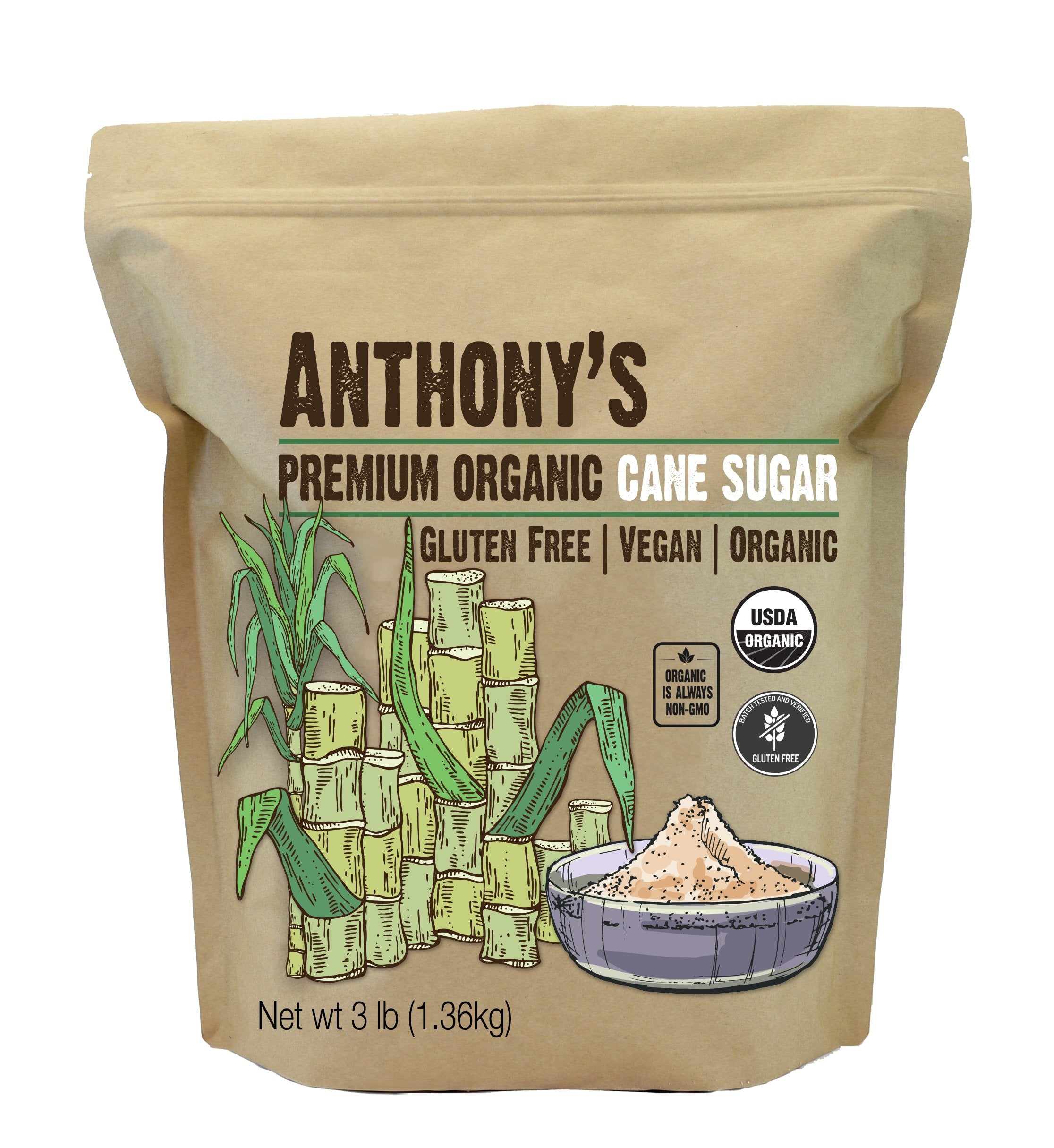The Science Behind Cane Sugar Processing: Exactly How Sweetness is Fine-tuned
The Science Behind Cane Sugar Processing: Exactly How Sweetness is Fine-tuned
Blog Article
An Extensive Guide to the Ecological Influence and Sustainability Practices in Walking Cane Sugar Handling
The ecological impact of walking cane sugar processing provides a complicated range of challenges that warrant mindful assessment. From soil degradation and too much water usage to the carbon impact connected with cultivation and manufacturing, the effects of standard methods are far-reaching. What particular practices can be applied to strike an equilibrium between productivity and ecological stewardship?
Review of Walking Cane Sugar Handling
Cane sugar processing includes a collection of methodical actions that change sugarcane right into polished sugar. Originally, collected sugarcane is delivered to refining centers, where it undergoes cleaning to remove soil and debris. Following this, the walking cane is squashed to draw out juice, which is after that made clear by removing contaminations via heating and the addition of lime.
The made clear juice undergoes dissipation, where water is eliminated to focus the sugar content. These crystals are separated from the continuing to be syrup using centrifugation, resulting in raw sugar.
The end product is then dried and packaged for circulation. Throughout this entire process, keeping performance and quality assurance is vital to make certain the sugar satisfies industry criteria. Each step in walking cane sugar processing not just contributes to the final item but likewise has implications for resource usage and waste generation, establishing the phase for conversations on sustainability and environmental impacts connected with sugar production.
Ecological Challenges of Manufacturing
The production of walking cane sugar provides numerous significant ecological challenges that warrant focus. One primary concern is the extensive use of agrochemicals, consisting of plant foods and pesticides, which can result in dirt degradation, biodiversity loss, and contamination of local water resources. The overflow from sugarcane fields usually lugs these chemicals right into close-by communities, interrupting aquatic life and influencing the wellness of neighborhoods reliant on these water bodies.
Another obstacle is the high power usage connected with sugarcane handling. The boiling and refining phases need substantial warmth, mostly produced by burning nonrenewable fuel sources, adding to greenhouse gas discharges. Furthermore, the expansive land location needed for sugarcane farming can lead to deforestation and habitat destruction, more intensifying climate adjustment and harmful wild animals.
In addition, the labor techniques in some areas increase honest worries, as employees may encounter bad working problems and poor salaries. This scenario usually bolsters a cycle of poverty in local areas. Cane Sugar Processing. Dealing with these environmental difficulties is crucial for creating a lot more sustainable techniques in cane sugar manufacturing, ultimately profiting both the environment and the areas associated with this market
Water and Land Use Effect
Water resources and land utilization are crucial elements in the cane sugar market that dramatically impact the atmosphere. The farming of sugarcane requires considerable water input, with price quotes suggesting that it can consume approximately 2,000 litres of water per kilogram of sugar created. This extensive use water frequently brings about depletion of local water sources, affecting not only the sugarcane vineyards yet also surrounding ecological communities and neighborhoods that rely upon the exact same water resources for agriculture and residential use.

In addition, land use for sugarcane cultivation can bring about logging and the conversion of natural habitats right into monoculture haciendas. This technique diminishes biodiversity, interferes with regional environments, and contributes to soil destruction. The development of sugarcane fields usually intrudes on useful agricultural land, creating competitors for resources in between food and biofuel production.
Sustainable techniques, such as optimizing watering techniques and carrying out crop turning, are vital to mitigate these influences. By adopting a lot more effective water use and land management methods, the cane sugar sector can minimize its ecological footprint, guaranteeing an equilibrium between farming productivity and environmental preservation.
Greenhouse Gas Emissions
Greenhouse gas discharges stand her latest blog for a substantial ecological issue within the walking stick sugar handling market, specifically as farming techniques expand to meet global demand. The growing of sugarcane, a plant that flourishes in tropical climates, depends heavily on artificial fertilizers and pesticides, which add to laughing gas emissions. Furthermore, land-use adjustments, consisting of deforestation for brand-new sugarcane vineyards, launch carbon dioxide kept in vegetation and soil.
During processing, energy intake is an additional major source of greenhouse gas emissions - Cane Sugar Processing. Numerous sugar mills use nonrenewable fuel sources to power machinery and produce heat, leading to significant carbon footprints. Moreover, the transport of raw sugarcane and finished products adds layers of emissions through fuel combustion in vehicles
The cumulative impact of these discharges intensifies climate change, positioning risks not only to the environment yet additionally to the lasting feasibility of the market. Stakeholders need to recognize the urgent need for comprehensive approaches that resolve these discharges. This includes examining existing farming moved here methods, refining techniques, and transport systems to determine areas for improvement and reduction. Resolving greenhouse gas exhausts is crucial for promoting a more lasting walking stick sugar industry in a transforming climate.

Lasting Practices and Innovations
Sustainable techniques and advancements are increasingly essential in the cane sugar handling market as stakeholders seek to minimize environmental influences while preserving performance. One considerable advancement is the execution of integrated plant administration, which optimizes source use by combining dirt management, bug control, and crop turning techniques. This approach improves yield while decreasing chemical inputs and protecting soil wellness.
Additionally, the adoption of renewable resource sources, such as biomass from sugarcane deposits, has gained grip - Cane Sugar Processing. By converting waste items into power, refining facilities can reduce their dependence on fossil fuels, thus reducing greenhouse gas emissions
Water monitoring practices have actually likewise seen enhancements through the recycling and reusing of water in handling plants, substantially decreasing freshwater usage. Innovations in innovation, such as accuracy agriculture, make it possible for farmers to keep an eye on plant health and wellness and source usage a lot more effectively, making sure lasting cultivation methods.
Furthermore, qualification programs like Fair Trade and Jungle Partnership encourage ecologically responsible farming practices and promote social equity within the supply chain. By embracing these lasting practices and technologies, the cane sugar handling market can improve its durability and read more add positively to environmental stewardship.
Final Thought
The environmental impact of cane sugar processing presents significant challenges, including soil destruction, high water intake, and greenhouse gas exhausts, along with honest worries connected to labor techniques. Resolving these concerns via lasting methods, such as integrated crop administration, sustainable power fostering, and water recycling, is crucial. By advertising socially equitable and ecologically accountable approaches in sugar production, the industry can mitigate its adverse effects, ensuring an extra lasting future for both ecosystems and communities associated with this industry.
Walking stick sugar handling entails a collection of organized actions that transform sugarcane into refined sugar. Each step in cane sugar handling not just adds to the last item but also has effects for source use and waste generation, establishing the stage for discussions on sustainability and environmental effects associated with sugar manufacturing.
Greenhouse gas emissions stand for a considerable environmental concern within the walking cane sugar handling industry, specifically as farming techniques broaden to meet worldwide demand.Lasting practices and technologies are progressively important in the walking cane sugar processing sector as stakeholders look for to decrease ecological impacts while keeping productivity.The ecological effect of cane sugar handling offers considerable obstacles, including soil deterioration, high water consumption, and greenhouse gas exhausts, together with moral worries related to labor techniques.
Report this page